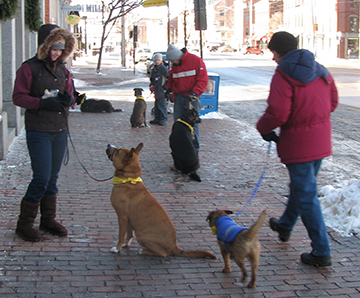When changing your dogs behavior or habits it is best to go slow and keep it simple. Changing habits takes time and while the process may seem overwhelming at times, remember small successes are a big deal!
1. Make a plan, put it in writing, including specific detailed goals
2. Identify your dogs triggers and the alternative behavior you desire
3. Focus on asking your dog to do the alternative behavior or habit every single time the trigger happens at a distance, for several weeks.
4. Reward your dog generously for offering the alternative behavior
- Reward even if the dog attempts the behavior.
- Reward even if the dog takes one step or turns his head to consider the option of complying.
- Avoid only rewarding when the dog completes the new behavior, but do reward the dog for even the slightest attempt of any new behavior. This is called a “choice point”, it is to your advantage to reward any attempt in making the correct choice!
- Avoid this mistake: if your dog is afraid of the mail carrier, then begin with all adults but avoid the mail carrier for now. When your expectations are not real, you will be frustrated. Setting your dog up for success is best done when the triggers are very low and far away, this is a good plan for getting an alternative behavior started.
- Even if the dog does it for one second! When you begin to reward slight offerings of new behavior, your dog will more likely want to continue to play this new game!
Take it slow, breathe, and relax as your dog is depending on you! Setting your dog up for success also implies training when YOU are in a calm mental state. If it helps, think of the many things your dog does right and build one small behavior at a time!
Next, I will offer specific games to play in specific locations to help you progress.


